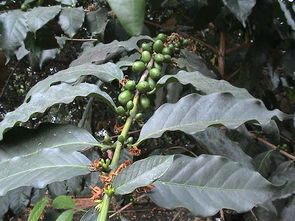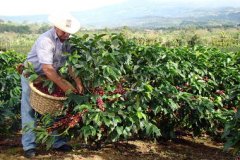Coffee growing environment Guatemala coffee growing environment
Faced with severe landscape changes and shrinking habitats, more than 90 species of migratory birds have found refuge in shaded trees. In early autumn (north temperate zone), birds such as Nashville warbler (Vermivoraruficapilla), wide-winged eagle (Buteo swordfish), crested flycatcher (Myiarchuscrinitus), lovely summer Donna Finch (Piranga bayberry), Raptors and others frequently have shadow coffee.

In Guatemala, migratory birds are found on coffee farms in different ecosystems. Legume trees are like "cuje." Gushi í N, "and" chalum "(INGA genus), used in Guatemala as the main shade tree type, are not only beneficial to coffee plants, but also to migratory birds foraging birds, attracting nectar from flowers or flowers from insects. Other species of trees provide shelter and resources for companion epiphytes of the pineapple family, orchids and ferns to improve the overall biodiversity of coffee farms, birds and other animals.
In addition to migratory birds, the eastern mountain forests and coffee farms have more than a hundred resident birds, such as the crescent wabler (forest superciliosa), the masked striped pheasant (semifasciata), the tropical Golden Boda (tyrannus melancholy) and the common Bush Donna Finch. A shadow coffee system, which cannot replicate the dynamics of natural forests, can provide surprisingly high-quality habitats for many of these birds.
In the East, Shadow Coffee Farm forms the bridge between the natural forest, adding these residual patches and providing supplementary habitat, the landscape has been severely altered by human intervention. Without these basic habitats, birds will face greater challenges in the area of finding shelter, feeding and nesting.
Important Notice :
前街咖啡 FrontStreet Coffee has moved to new addredd:
FrontStreet Coffee Address: 315,Donghua East Road,GuangZhou
Tel:020 38364473
- Prev

The planting environment of coffee trees the conditions for planting coffee trees
Coffee has entered thousands of households, and it is no longer what people called a foreign thing many years ago. So many friends in the planting industry also want to plant coffee trees to catch up with the ocean current. Next, I will introduce to you a little knowledge about the growing environment of coffee. 1. Coffee belt: coffee can not be grown in any environment, because it was originally grown in a tropical rain forest.
- Next

Introduction to the characteristics of Ethiopian coffee
Ethiopia is one of the major producers of Arabica coffee in Africa, producing the best Arabian coffee in the world. It is said that coffee was first discovered by shepherds in Essekafa, and the name of coffee evolved from Kafa, so Essex is still the hometown of coffee. The geographical environment of coffee production and processing is very suitable for coffee growth. Coffee is mainly cultivated.
Related
- Beginners will see the "Coffee pull flower" guide!
- What is the difference between ice blog purified milk and ordinary milk coffee?
- Why is the Philippines the largest producer of crops in Liberia?
- For coffee extraction, should the fine powder be retained?
- How does extracted espresso fill pressed powder? How much strength does it take to press the powder?
- How to make jasmine cold extract coffee? Is the jasmine + latte good?
- Will this little toy really make the coffee taste better? How does Lily Drip affect coffee extraction?
- Will the action of slapping the filter cup also affect coffee extraction?
- What's the difference between powder-to-water ratio and powder-to-liquid ratio?
- What is the Ethiopian local species? What does it have to do with Heirloom native species?

